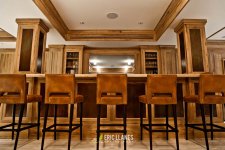Alan m said:
has any one got any tips or tricks for photographing your site work.
I will try...
Alan m said:
im talking more kitchens , floors, built ins
Kitchens are difficult because of multiple light sources and tight working space, built-ins easier. Floors by them selves don't really make very interesting photos even when correctly exposed. For me, natural light makes them look the best.
Practice on built-ins and then up your game.
Read
photography for realestate, for more information on lighting and photographing your work.
Subscribe to some good real estate
photographers blogs, they often publish tips and tricks.
Alan m said:
im looking to take some good shots for websites, flyers et. I have a Nikon 5200 camera but cant get the pic the way I want it.
If you can post or attach a couple photo's I could pick one or two and then post what I do to correct them.
The camera doesn't matter, but good glass (lens) and composition (where and how you frame the photo) do. A good fast wide angle (18-55) zoom lens and a good fast telephoto/macro lens (100 mm) are good one-two punch to give your photos drama. The wide angle lens will enable you to take pictures in tight spaces, create more drama and the macro will allow you to take some nice close ups for contrast. The wide angle will distort the verticals in the photos so you need to correct that. If you have more space and can use a longer lens, then the correction will be less.
Alan m said:
they usually have too much light in areas and shadows etc in others
Shoot earlier or later in the day for less contrast (glare and shadow) and use a tripod to shoot at a slower speed to compensate for less light. Shoot "RAW" mode to fix bad exposure (under/over) in Photoshop or similar software, and use software Photoshop etc. to correct lens distortion
correcting verticals.
Tim

